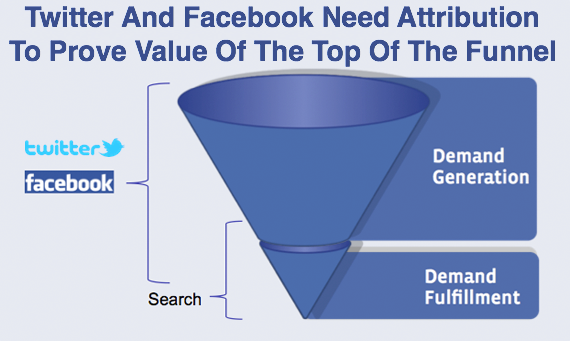Twitter and Facebook usually aren’t the last click before an ecommerce buy, but that doesn’t mean they didn’t inspire or influence the purchase. Yet IBM’s Black Friday report says Twitter delivered 0 percent of referral traffic and Facebook sent just 0.68 percent. To lure advertisers and ecommerce integrations, they have to show its not Google driving every sale.
Last year IBM said Twitter generated 0.02 percent of traffic, but now the microblogging platform supposedly drove no measurable amount of traffic. If you factored in downstream visits and conversions, that percentage might not be huge, but I doubt it’s zero. As a whole IBM says social networks including Facebook, Twitter, LinkedIn, and YouTube generated 0.34 percent of all online sales on Black Friday, down 35 percent from 2011. The lack of sales attribution, especially for paid ads, is a problem for the entire industry.
[One major caveat: IBM did not readily disclose the methodology for this study, so numbers should be taken with heavy salt, and this article isn’t trying to say Twitter doesn’t drive referral traffic or influence purchases. Twitter’s role in demand generation is very important, but the issue is tracking this to show businesses they get a return on their ads and effort spent on the social network.]

These last few months, Facebook has been making a major push to get credited for downstream purchases. It’s rolled out both a self-serve User ID matching system and cookie-dropping ads. These let advertisers tell if someone who bought something on their site saw an ad for them on Facebook in the previous weeks or months – not just if an ad click-through led straight to the shopping cart.
However, these don’t tally purchases inspired by owned (Page posts) or earned (word of mouth) media on Facebook. Those are huge. Facebook tells me the top 25 most talked about Pages this week were all retailers. Walmart, Toys’R’Us, and Macy’s had the most PTAT (Likes/comments/shares). User mentions of the word “shopping” spiked 586 percent last week, and many of those probably cited where people were shopping.
That’s a ton of viral marketing that could be driving downstream conversions but isn’t being counted. Facebook may need to extend these attribution systems so ecommerce sites can tell whether a buyer is one of their fans, saw a particular post promoting what they bought, or saw a link to the product that was shared by a friend.

Twitter seems to be way behind on this. I haven’t heard of any downstream conversion attribution systems connected to Twitter accounts or ads. Sure, ecommerce sites can tell if someone clicked straight to their site from one of their Promoted Tweets. But what if minutes, hours, or days later they remember the ad or account, search for it on Google, and end up making a purchase?
Twitter has confirmed with me that it doesn’t have any downstream conversion tracking right now, which means it isn’t getting the credit it deserves. I think correcting that will be a big focus for Twitter in 2013.
It’s critical that these social networks beef up their attribution systems because advertisers only want to plop down their dollars where they can see clear return on investment. If you spend $50,000 on Twitter ads, but all your holiday sales come from Google, you might shift that budget to search ads.
Alternatively, if Facebook and Twitter really push their attribution systems, they could claim credit for driving purchases they only lightly influenced, or for delivering buyers that didn’t even notice they saw an ad for what they bought. That might not be the most honest business tactic, but right now search engines are scoring touchdowns without giving credit to who threw the ball.
[Image Credit: Inc.]
